Explore low range pressure sensors for measuring pressures in Pascals, mbar, or inches H2O. Learn about design challenges, accuracy, and applications like HVAC & cleanrooms.
Low range pressure sensors are essential instruments designed for the precise measurement of small pressures and differential pressures, often encountered in air and gas handling systems. Characterized by highly sensitive diaphragms engineered to detect minute forces, these devices face unique challenges related to environmental influences like temperature and vibration, requiring careful design and application consideration. They are indispensable in fields such as HVAC system control, cleanroom environmental monitoring, filter condition assessment, and specialized industrial processes where accurate low-pressure data is critical for performance and safety.
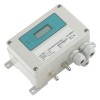 DPS Low Differential Pressure Transmitter - Ultra low differential pressure transmitter for HVAC applications with 4-20mA current loop or amplified voltage output signal in pressure ranges from 0.1 mb up to 1 bar differential.
DPS Low Differential Pressure Transmitter - Ultra low differential pressure transmitter for HVAC applications with 4-20mA current loop or amplified voltage output signal in pressure ranges from 0.1 mb up to 1 bar differential. 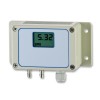 DPS200 HVAC Differential Pressure Transmitter - Differential air pressure sensor with a 10 volt or a 4-20mA output for building ventilation applications. Ranges from 0 to 6 mbar up to 0 to 1000 mbar.
DPS200 HVAC Differential Pressure Transmitter - Differential air pressure sensor with a 10 volt or a 4-20mA output for building ventilation applications. Ranges from 0 to 6 mbar up to 0 to 1000 mbar.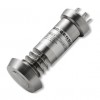 DMP331P Hygienic Flush Pressure Transmitter - Sanitary pressure sensor wth exposed diaphragm with no crevices for high temperatures up to 300 Degrees Celsius in ranges from 100mb up to 40 bar gauge or absolute
DMP331P Hygienic Flush Pressure Transmitter - Sanitary pressure sensor wth exposed diaphragm with no crevices for high temperatures up to 300 Degrees Celsius in ranges from 100mb up to 40 bar gauge or absolute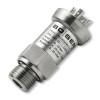 DMP331 Precision Pressure Transmitter - Stainless steel pressure transmitter with ranges from 100mbar up to 40 bar gauge or absolute. Special options for ATEX , SIL2 and compound ranges.
DMP331 Precision Pressure Transmitter - Stainless steel pressure transmitter with ranges from 100mbar up to 40 bar gauge or absolute. Special options for ATEX , SIL2 and compound ranges. DPS300 User Switchable Pressure Range, Volts or Current Output Low DP Sensor - The DPS 300 is a low range HVAC differential pressure sensor. The lowest possible pressure range is 0...100 pascals. 2 or 3 switchable pressure ranges, plus volts or current output are included with most standard configurations.
DPS300 User Switchable Pressure Range, Volts or Current Output Low DP Sensor - The DPS 300 is a low range HVAC differential pressure sensor. The lowest possible pressure range is 0...100 pascals. 2 or 3 switchable pressure ranges, plus volts or current output are included with most standard configurations. IWPT Wireless Battery Powered Pressure Sensor and Receiver - Wireless battery powered pressure sensor and receiver system for connecting pressure sensors without wires to a central wireless receiver which converts each received pressure signal channel to a 1-5Vdc, 4-20mA output, USB, Ethernet TCP, RS232 RTU, RS485 RTU or 2G 3G 4G mobile cellular network.
IWPT Wireless Battery Powered Pressure Sensor and Receiver - Wireless battery powered pressure sensor and receiver system for connecting pressure sensors without wires to a central wireless receiver which converts each received pressure signal channel to a 1-5Vdc, 4-20mA output, USB, Ethernet TCP, RS232 RTU, RS485 RTU or 2G 3G 4G mobile cellular network.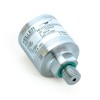 41X Low Range Digital Output Pressure Sensor - Low pressure sensor with a USB, RS232 or RS485 digital output interface for measuring low range gauge or differential pressures from 10 to 300 mbar.
41X Low Range Digital Output Pressure Sensor - Low pressure sensor with a USB, RS232 or RS485 digital output interface for measuring low range gauge or differential pressures from 10 to 300 mbar. 41X High Precision Low Range Pressure Transmitter - High precision pressure transmitter for measuring very low vented gauge reference or differential air pressures. Rangeable 4-20mA or 0-10 volt output.
41X High Precision Low Range Pressure Transmitter - High precision pressure transmitter for measuring very low vented gauge reference or differential air pressures. Rangeable 4-20mA or 0-10 volt output.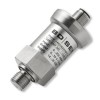 DMP343 Low Range Pneumatic Pressure Sensor - DMP343 pneumatic pressure sensor for measuring very low range pressures on pneumatic control systems, heating, ventilation and air conditioning systems (HVAC) .
DMP343 Low Range Pneumatic Pressure Sensor - DMP343 pneumatic pressure sensor for measuring very low range pressures on pneumatic control systems, heating, ventilation and air conditioning systems (HVAC) .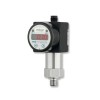 DS210 Combined Low Pressure Switch, Indicator and Sensor - Low range three in one pressure switch, pressure indicator and pressure sensor for use on pneumatics and HVAC applications.
DS210 Combined Low Pressure Switch, Indicator and Sensor - Low range three in one pressure switch, pressure indicator and pressure sensor for use on pneumatics and HVAC applications.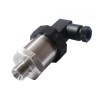 IMPLR Low Range All Stainless Steel OEM Pressure Sensor - Low cost sensor for measuring small pressure ranges from 0-50 mbar (10 inH2O) to 0-1000 mbar (15 psi) of liquids or gases.
IMPLR Low Range All Stainless Steel OEM Pressure Sensor - Low cost sensor for measuring small pressure ranges from 0-50 mbar (10 inH2O) to 0-1000 mbar (15 psi) of liquids or gases.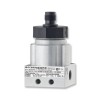 DMD341 Compact Differential Air Pressure Sensor - Small size dp sensor for measuring differential air pressure on HVAC, compress air and pneumatic control systems.
DMD341 Compact Differential Air Pressure Sensor - Small size dp sensor for measuring differential air pressure on HVAC, compress air and pneumatic control systems.
- Low operating temperature plus/minus 1 psi pressure transmitter
- Air classification system powder duct pressure transmitter with +/-15 kPa range and ATEX/IECEx IS cert
- 100 Pa bi-directional range differential air pressure transmitter
- 10Pa diff range 0-20mA output air pressure sensor for automotive component testing
- ATEX approved negative 10 mbar vacuum pressure transmitter
- Stainless steel 316L wetted parts 100 mbar ATEX pressure transmitter
- Solvent compatible +/-100mWG dp transmitter with PTFE seals
- Ethylene glycol antifreeze compatible 300 pascal dp sensor
- Natural gas booster pump inlet/outlet pressure transmitters for backup power generators
- Low delta P sensor with 200mmH2O range and response time < 5ms
- 4 inch water column range 4-20mA differential pressure sensor for liquids
- 10 mmWC draft fan differential pressure transmitter
 Draft Pressure Sensors - Find low-pressure transducers & transmitters (inWC, mbar, Pa) designed for draft measurement in air handling, combustion control, and ventilation applications.
Draft Pressure Sensors - Find low-pressure transducers & transmitters (inWC, mbar, Pa) designed for draft measurement in air handling, combustion control, and ventilation applications. Low Pressure Transmitters - Low pressure transmitters for measuring gauge, differential, and absolute pressures below 1 bar (15 psi). Ideal for cleanrooms, HVAC, and air contamination control with 4-20mA output.
Low Pressure Transmitters - Low pressure transmitters for measuring gauge, differential, and absolute pressures below 1 bar (15 psi). Ideal for cleanrooms, HVAC, and air contamination control with 4-20mA output. Low Differential Pressure Transmitters - Select highly sensitive low DP transmitters designed for critical applications like ventilation control, hospital isolation rooms, and laboratory environments. Features include 4-20mA signals, displays, and alarm contacts.
Low Differential Pressure Transmitters - Select highly sensitive low DP transmitters designed for critical applications like ventilation control, hospital isolation rooms, and laboratory environments. Features include 4-20mA signals, displays, and alarm contacts.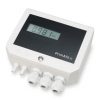 Low Range DP Sensors - Low range differential pressure sensors for measuring very small pressure differences.
Low Range DP Sensors - Low range differential pressure sensors for measuring very small pressure differences. Low Range DP Voltage Output Transducers - Low range differential pressure transducers are essential for monitoring and controlling air movement in a variety of applications, including ventilation systems, air extraction systems, and building management systems.
Low Range DP Voltage Output Transducers - Low range differential pressure transducers are essential for monitoring and controlling air movement in a variety of applications, including ventilation systems, air extraction systems, and building management systems. Low Range USB Pressure Sensors - Low range USB pressure sensors are suitable for monitoring pressure in cleanrooms, HVAC systems, and filter monitoring, among other applications.
Low Range USB Pressure Sensors - Low range USB pressure sensors are suitable for monitoring pressure in cleanrooms, HVAC systems, and filter monitoring, among other applications. Low Pressure Range Intrinsically Safe Pressure Transmitters - These intrinsically safe pressure transmitters are designed for precise measurement in hazardous areas where low pressure ranges are critical.
Low Pressure Range Intrinsically Safe Pressure Transmitters - These intrinsically safe pressure transmitters are designed for precise measurement in hazardous areas where low pressure ranges are critical. Low Range Voltage Output Pressure Transducers - Low-range pressure transducers with amplified voltage output are precision instruments designed to accurately measure subtle pressure variations in diverse applications.
Low Range Voltage Output Pressure Transducers - Low-range pressure transducers with amplified voltage output are precision instruments designed to accurately measure subtle pressure variations in diverse applications.
Find out more about Low Range Pressure Sensors to determine which product options and capabilities will best meet your application requirements.
Low-range pressure sensors are specifically engineered to accurately quantify minute pressure levels, often below 1 psi or extending down into fractions of an inch of water column or pascals. These instruments are critical in applications where subtle pressure variations dictate system performance or safety, frequently involving the management and control of air or other gases. Unlike higher-pressure systems, the pressure differentials needed to induce flow in applications like building HVAC systems, laboratory fume hoods, or industrial dust extraction are deliberately kept small to minimize acoustic noise and prevent operational issues, such as difficulty opening doors due to pressure differences.
The core challenge in designing sensors for these low pressures lies in achieving sufficient sensitivity. Low pressures exert minimal force on the sensing element. To compensate, designers typically employ diaphragms with significantly larger surface areas compared to their higher-pressure counterparts. This increased area allows the faint pressure force to generate a measurable physical displacement or stress within the sensing material. Concurrently, the diaphragm thickness is often reduced to enhance flexibility, although this is constrained by the inherent strength and manufacturing limitations of the chosen sensing technology, whether it be piezoresistive silicon, capacitive ceramic, or another specialized material.
This design necessity of a large, thin diaphragm introduces specific performance trade-offs. While sensitivity is boosted, these sensors inherently exhibit greater susceptibility to external environmental factors. Mechanical vibration, for instance, can more easily induce diaphragm movement, potentially registering as pressure noise or inaccurate readings. Thermal stability is also a key consideration; minute temperature fluctuations can cause expansion or contraction in the sensor assembly, leading to zero shift (changes in output at zero pressure) or span shift (changes in the output range). Consequently, low-range pressure sensors typically have accuracy specifications that are derated compared to higher-range devices operating under ideal conditions, and effective temperature compensation circuitry is vital.
Precise measurement at very low pressures also demands careful attention to installation specifics. The mounting orientation of the sensor can become significant, particularly for differential sensors measuring pressures in the Pascal or low inches-of-water-column range, as gravitational effects on the large, sensitive diaphragm can introduce measurement offsets. Furthermore, ensuring leak-tight pneumatic connections using appropriate tubing is crucial, as even minuscule leaks can significantly skew readings in systems operating so close to ambient pressure. The dynamic response can also be affected by tubing length and diameter, particularly in differential pressure flow measurements derived from Pitot tubes, orifice plates, or Venturi constrictions.
Application areas frequently dictate the preferred units of measurement. While the SI unit Pascal (Pa) is common in scientific contexts and increasingly in cleanroom specifications (e.g., ISO 14644), legacy units remain prevalent in specific industries. Millibar (mbar) or hectopascals (hPa) are often used in meteorology and some industrial processes. In the HVAC industry, particularly in North America, inches of water column (inWC or variants like “WG) is the standard unit for quantifying fan static pressures, filter pressure drops, and duct air pressures. Selecting a sensor often involves matching its range and units to the specific requirements of applications like Variable Air Volume (VAV) box control, cleanroom positive/negative pressure maintenance, hospital isolation room monitoring, filter loading indication, or draft pressure control in combustion appliances. Output signals range from traditional analog voltages (e.g., 0-5V, 0-10V) and current loops (4-20mA) to digital protocols like I2C, Modbus, or BACnet for direct integration into modern control systems.
Product Help
Low pressure inflatable control with atmospheric pressure changes
We use low pressure inflatables, and we would like to be able to know what kinds of atmospheric pressure we are working with, so we can more accurately control the inflation. Could you please help point us in the right direction for what type of sensor we should use?
Typically you would control inflation by measuring the differential pressure between the interior and exterior of the inflatable. This way you can maintain inflation control independently of atomospheric pressure changes.
If the inflatable exterior pressure is atmospheric pressure then you can use a vented gauge reference pressure sensor such as the DMP343 which will measure over the range of 0-10 mbar / 4 inWG or higher.
If the differential pressure is much lower than 10 mbar / 4 inWG then we would suggest the DPS which will measure over a range as low as 0 to 0.1 mbar / 0.04 inWG.
Since the DPS is a differential pressure sensor with two connection ports it can also be used in applications where the inflatable exterior pressure is not atmospheric pressure, and requires a connection point in addition to the inflatable interior pressure.
For higher pressure ranges requiring two fitting points for inflatable interior & exterior pressure, we would suggest the DMD341 or DPS200 which have pressure ranges starting from 0-6 mbar / 2.4 inWG.
